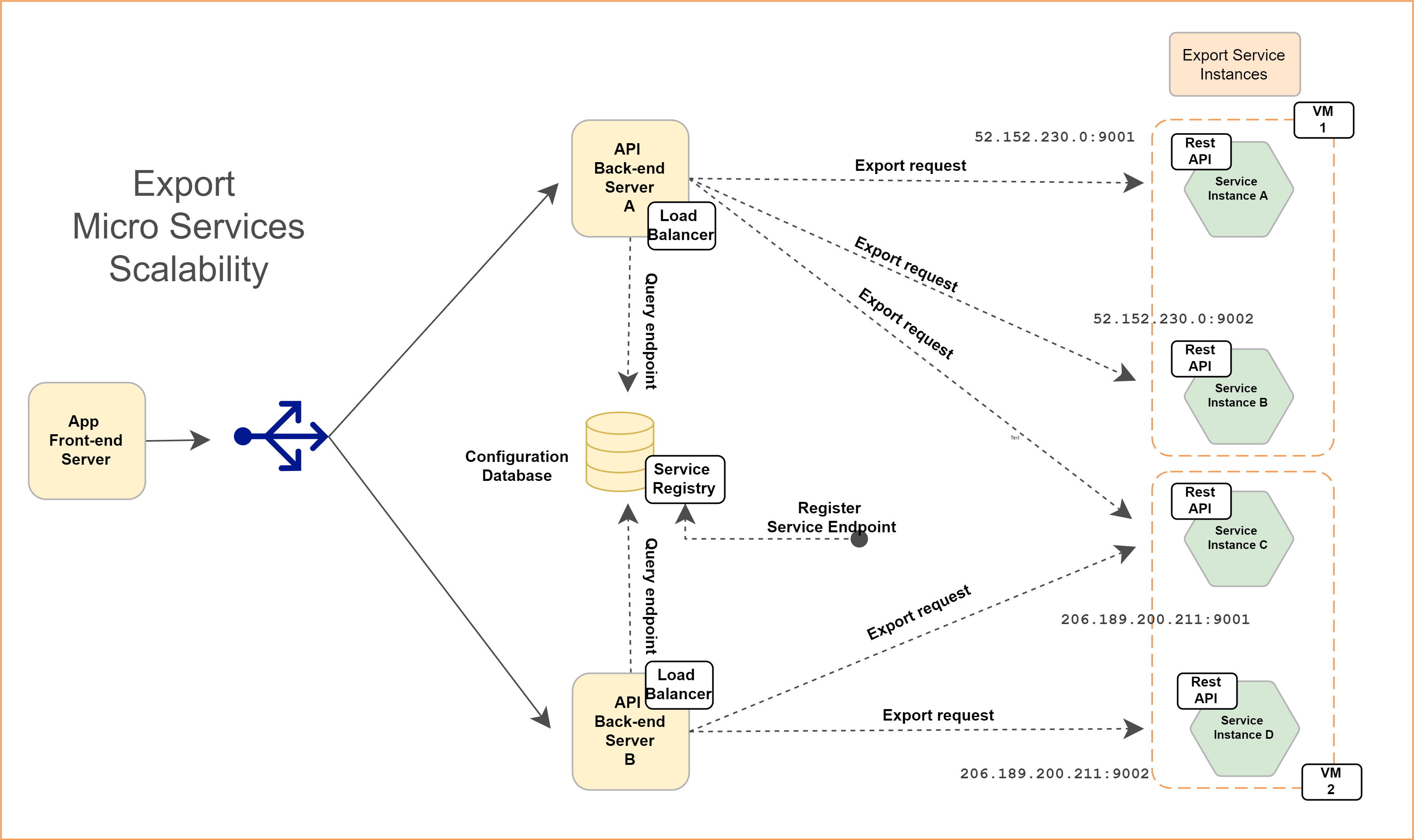Export Micro Service¶
Deploying Export Micro Service on Linux¶
Export micro service does not required to be installed on same server as Izenda back-end or front-end. It can also run on any separate server. For installation on separate server, follow the steps mentioned here Export Micro Service . The only difference is to setup a reverse proxy on web server.
Pre-deployment steps¶
Node JS
Izenda Export service needs Node JS runtime environment to execute. Login as root user and run following commands.
sudo curl -fsSL https://deb.nodesource.com/setup_12.x | sudo -E bash - sudo apt-get install -y nodejs sudo nodejs -v
PM2
Izenda Export service leverages PM2 as process manager. Login as root user and run following commands.
sudo npm install pm2@4.5.0 -g sudo pm2 --version
Deployment steps¶
Login as root user and copy Export Service at desired location. Run following commands by replacing export service archive name and port.
tar -xvf exportservice-4.0.0-linux.tgz cd package sudo pm2 start app.js -- --port 5775 sudo pm2 startup systemd sudo pm2 save sudo pm2 list
On successful completion of these commands, Export Service will start listening on specified port number.
Deploying Export Micro Service on Windows¶
Export micro service does not required to be installed on same server as Izenda back-end or front-end. It can also run on any separate server. For installation on separate server, follow the steps mentioned here Export Micro Service . The only difference is to setup a reverse proxy on web server.
Pre-deployment steps¶
Node JS
- Izenda Export service needs Node JS runtime environment to execute. Download and install Node JS from
node-v12.21.0-x64.msiby navigating to https://nodejs.org/dist/latest-v12.x/
Deployment steps¶
Copy export service at desired location and unzip Export Service archive. Open command prompt in administrative mode and navigate to extracted location. Run following command.
cd package node app.js --port 5775
On successful completion of these commands, Export Service will start listening on specified port number.
BI Application changes¶
Export micro service can be enabled by setting
EnableExportServiceto1inIzendaSystemSettingtable. Note: We strongly recommend to take backup of configuration database before running script.UPDATE IzendaSystemSetting set Value='1' where Name='EnableExportService';
Additionally, make an entry into
IzendaExportServicetable specifying URL of Export Service. For example:INSERT INTO [IzendaExportService]([Id],[Url],[RequestCount]) VALUES ('9195E7BE-96A3-4529-985A-C4DC88646FFE','http://localhost:5775',0);
Service Scalability¶
This is an optional step.
Export micro service is designed to scale out horizontally into multiple instances. A typical use case scenario would be a heavy load on export functionality. In such situations the load will be shared among multiple instances and multiple simultaneous exports will take relatively lesser time.
Deployment Steps
- Navigate to the location where service is extracted and simply start the service on a different port.
- Additionally, make an entry into IzendaExportService table specifying URL of Export Service. For example, if new service got started on http://localhost:5776, make an entry as following.
INSERT INTO [IzendaExportService]([Id],[Url],[RequestCount]) VALUES ('5A93C3B8-56CF-409E-B45C-2F288732A53F','http://localhost:5776',0);
Fig. 1 Scaling export micro services


